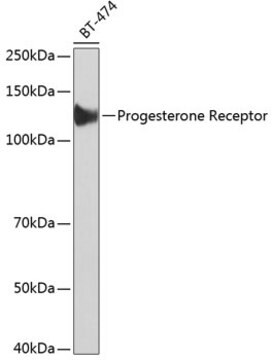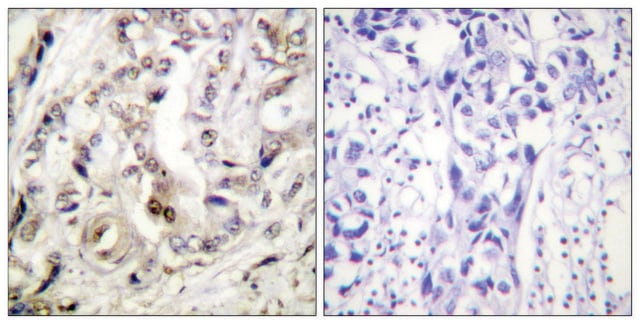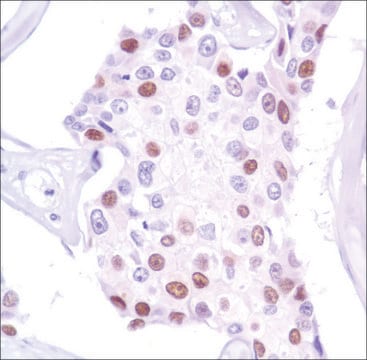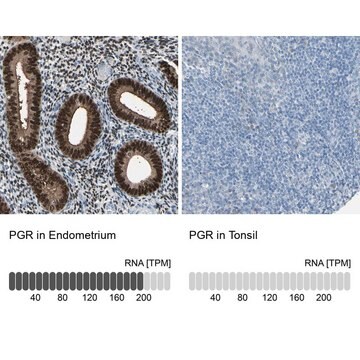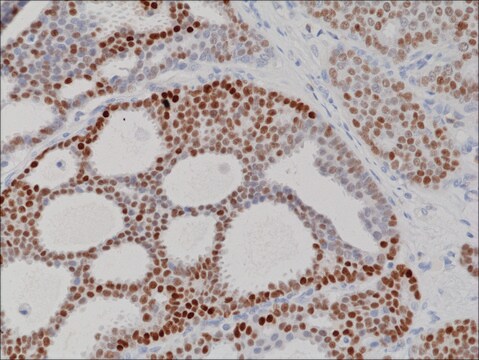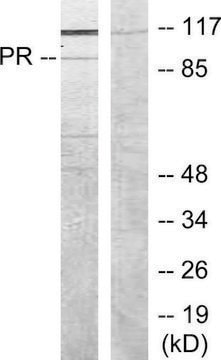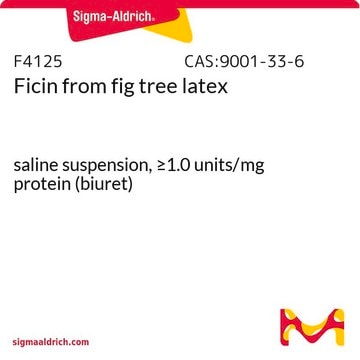MABS1235
Anti-Progesterone Receptor A/B Antibody, clone 488/H3
clone 488/H3, from mouse
Sinónimos:
Progesterone receptor, PR, Nuclear receptor subfamily 3 group C member 3, Progesterone Receptor A/B
About This Item
Productos recomendados
origen biológico
mouse
Nivel de calidad
forma del anticuerpo
purified immunoglobulin
tipo de anticuerpo
primary antibodies
clon
488/H3, monoclonal
reactividad de especies
human
técnicas
immunocytochemistry: suitable
western blot: suitable
isotipo
IgG1κ
Nº de acceso NCBI
Nº de acceso UniProt
Condiciones de envío
wet ice
modificación del objetivo postraduccional
unmodified
Información sobre el gen
human ... PGR(5241)
Descripción general
Especificidad
Inmunógeno
Aplicación
Western Blotting Analysis: A representative lot detected endogenous progesterone receptor isoforms A & B (PR-A & PR-B) in human breast cancer T47D cell lysate, as well as exogenously expressed PR-A & PR-B in transfected DCIS.COM human ductal carcinoma in situ (DCIS) breast cancer cells, but not in untransfected DCIS.COM cells (Courtesy of Dr. Dean Edwards, Baylor College of Medicine, USA).
Calidad
Western Blotting Analysis: 0.5 µg/mL of this antibody detected both isoforms A and B (PR-A & PR-B) of progesterone receptor in human breast cancer T47D cell lysate.
Descripción de destino
Forma física
Otras notas
Not finding the right product?
Try our Herramienta de selección de productos.
Código de clase de almacenamiento
12 - Non Combustible Liquids
Clase de riesgo para el agua (WGK)
WGK 1
Punto de inflamabilidad (°F)
Not applicable
Punto de inflamabilidad (°C)
Not applicable
Certificados de análisis (COA)
Busque Certificados de análisis (COA) introduciendo el número de lote del producto. Los números de lote se encuentran en la etiqueta del producto después de las palabras «Lot» o «Batch»
¿Ya tiene este producto?
Encuentre la documentación para los productos que ha comprado recientemente en la Biblioteca de documentos.
Nuestro equipo de científicos tiene experiencia en todas las áreas de investigación: Ciencias de la vida, Ciencia de los materiales, Síntesis química, Cromatografía, Analítica y muchas otras.
Póngase en contacto con el Servicio técnico
